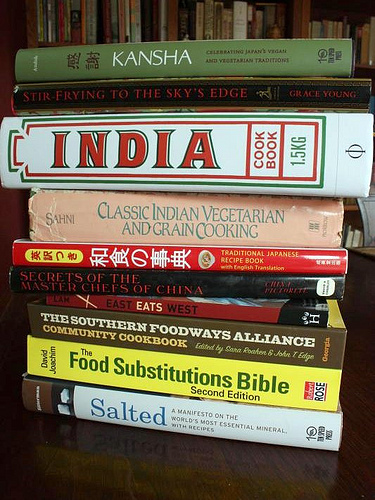
‘Tis the season to reflect upon and review the past year. There are many lists of favorite cookbooks circulating these days, offering up gift ideas, whether they’re for yourself or someone else. For 2010, I’d like to call out 10 titles that I added to my shelves. They’re not all Asian and they’re not all new. But they’re boosting my knowledge and I hope they do the same for you too.
2010 Asian Cookbook Picks
It’s great to open up a cookbook and absorb all the years and effort that an author puts into the publication. If you’re into Japanese, vegan, or vegetarian cooking, Elizabeth Andoh’s Kansha should be in your collection. She writes with humor and utmost care because she wants you to understand and appreciate Japanese food traditions. The recipe collection is full of insights that she accumulated during her decades in Japan. (See the Japanese vegan seasoned soy concentrate recipe for a sample recipe.)
Andoh pushes cooks to spend time with the book. For example, Japanese food ingredient terms are woven into the text seamlessly. Recipes names such as “Temple Scattered-Style Sushi†(gomoku shojin chirashi-zushi) make you stop and read her recipe headnotes thoroughly. Don’t scan Kansha expecting the usual suspects of Japanese recipes. Turn each page and peruse. Kansha captures the culinary distinctions and artful aspects of Japanese cuisine. The food tastes good too!
Grace Young has been on a mission to encourage people to understand Chinese wok cooking. From her first cookbook, The Wisdom of the Chinese Kitchen, to The Breath of a Wok, to her latest Stir-Frying to the Sky’s Edge, Young has traced the evolution of Chinese cooking through immigrant lives and hybrid communities. Her perspective is transnational in Sky’s Edge as the recipes in the collection include approaches by Chinese cooks in America, Malaysia, Burma, Peru and the Caribbean. Classics are there as well as provocative preparations like Trinidadian stir-fried shrimp with rum. This work took Young a good five years to produce. (Read a full review of Stir-Frying to the Sky's Edge and check out what I prepared from the book: Stir-fried Clams with Spicy Bean Sauce and Stir-fried Chicken with Black Bean Sauce.)
How about spending 20 years to round up recipes to represent India? That’s what Pushpesh Pant did and the result was released this year as the India: The Cookbook. There are 1,000 recipes to record the regional flavors of the country. There are no headnotes to introduce the food to novices but the recipe writing provides a strong foundation and inspiration for good cooking. The photography is not overly precious so as to get at the vibrancy of the Indian cooking. You want to leap into the pages and experience the food.
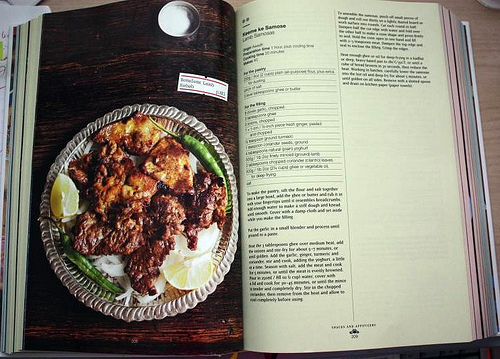
What I also love about India: The Cookbook is the design by Phaidon Press. The book comes in a tote bag that resembles an Indian rice bag. The humorous cover mimics the bag with over-the-top phrasing such as “Quality Assurance†and “The only book on Indian food you’ll ever need.†The binding is beautifully done to allow the pages to gracefully open. Different colors of paper are used and they often match the hues of the photographs, though the photos don’t always match the recipe next to them. The paper texture reminds me of elegant construction paper. It's tactile and charming. If you dig book design and cooking, this is a book to get.
My other favorite book came out in the U.S. this year. It's David Thompson's Thai Street Food. I talked about it in 2009 because that's when I got the European release. Now America has the book. Yep, it can double as a doorstop, given its weight and size. But I cook from it. Check the Thai chicken biriyani (khao mok gai) recipe for a sampling of what Thompson's book offers.
New Discoveries in 'Old' Books
For background information on Indian cooking, one work to consider is Julie Sahni’s Classic Indian Vegetarian and Grain Cooking. I saw it at the library the other day and said to myself, “Why don’t I have this book in my collection?†I have Sahni’s other work, Classic Indian Cooking, which is essential for anyone wanting a foundation for Indian foodways. (Get them both!) Her vegetarian book is from 1985 but it has endured over time. She’s succinct yet thorough and encouraging in her writing. Even better, her recipes work and they’re tasty.
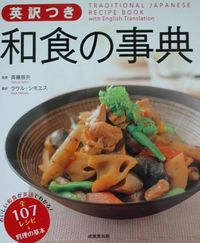 Few Japanese cookbooks published in Japan are translated into English but Traditional Japanese Recipe Book is bilingual! I read about the title on my friend Harris Salat’s site, the Japanese Food Report. Harris said that it can be hard to find in the U.S. and I was about to ask my friends in Tokyo to send me one. Then, I went into Kinokuniya, the Japanese bookstore chain that has outpost in the States. There it was. Things are well explained and there are good instructions. Use the book cover here to help you communicate to them what you’re looking for because the title is listed under the Japanese name.
Few Japanese cookbooks published in Japan are translated into English but Traditional Japanese Recipe Book is bilingual! I read about the title on my friend Harris Salat’s site, the Japanese Food Report. Harris said that it can be hard to find in the U.S. and I was about to ask my friends in Tokyo to send me one. Then, I went into Kinokuniya, the Japanese bookstore chain that has outpost in the States. There it was. Things are well explained and there are good instructions. Use the book cover here to help you communicate to them what you’re looking for because the title is listed under the Japanese name.
Another great cookbook tip that I received came from Singapore-based food writer Christopher Tan. We are email buddies and he was so excited about having found a copy of Secrets of the Master Chefs of China that I had to find it too! I searched online and snagged a copy of the 1983 book. There’s history, customs, and a terrific collection of unusual recipes chock full of insights. For example, in a simple dish like stir-fried pork tenderloin with coriander (cilantro) there's a note about how the fall cilantro has the richest flavor. (I never thougth of that. Do you agree?) Then there are elaborate banquet preparations like dragon and phoenix cold dishes (longfeng chengxiang). The recipes were developed in Beijing by top-notch chefs then tested in western home kitchens and tweaked. There’s great effort to impart practical knowledge and appreciation for Chinese cuisine. It’s a geeky book but one that I like to page through.
Other Cool New Books
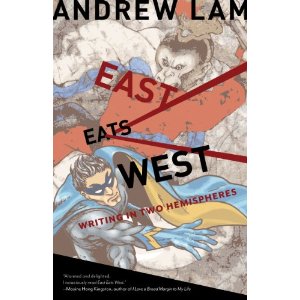 The next four books differ from the ones above in that they’re not Asian cookbooks. They are also different from one another. What they have in common is that they’re interesting, informative, and impactful.
The next four books differ from the ones above in that they’re not Asian cookbooks. They are also different from one another. What they have in common is that they’re interesting, informative, and impactful.
Andrew Lam’s collection of essays in East Eats West touches upon food but the title is more a metaphor for the cultural shifts happening between Asia and the West. Lam is a respected journalist and commentator who is at his best when dissecting the Vietnamese diaspora. In East Eats West, pieces such as “Ph(o)netics†poetically describes how Vietnamese people long for their national noodle soup no matter where they end up in the world. “Singing in the Family†reveals how karaoke allows his family to express their emotions and sadness. The concluding piece “Letters from a Younger Brother†cinematically captures Lam’s transformation from a naïve boy to an introspective man.
I also found myself lost in spirit that flowed from The Southern Foodways Alliance Community Cookbook. It’s the model of what a modern community cookbook ought to be – smart, funny, and full of personality. There are no photos but the storytelling and recipes, written by Sara Roahen and John T. Edge, paint images that fill your senses. The collection of recipes includes contributions from food celebs, authors, chefs, academicians, gardeners, activists, and home cooks. It’s one of the best publications of its kind. Community cookbooks are a terrific means to record local food traditions and fundraise too. It’s a dying genre but maybe works like this one will revive it.
When you don’t have something on hand for a recipe, David Joachim’s The Food Substitutions Bible can come to the rescue. It is indeed biblical, with 6,500 entries. Joachim covers Asian stuff well, as I found an entry for kinome leaf (Japanese prickly ash leaves) when I found myself in a recent pinch. When you use works like Joachim’s, it’s important to know what the original/actual ingredient is suppose to be like, how it functions in a recipe. That way, you can understand why Joachim recommends a particular substitute. There are often multiple possible subs and some are better than others. The suggestions can be quite clever too, such as that for panko. He recommends putting sliced bread through a food processors’ largest shredder blade and then baking the rough bits. Crushed pretzels, cornflakes, and potatoes are listed further down the line as panko stand-ins but are more distant cousins than what you’d get from the process-and-bake method.
I am a walking salt lick and Mark Bitterman’s Salted more than satisfies. Described as a manifesto, the title contains a useful “Salt Reference Guide†of 150 salts, many of which are Asian in provenance. For example, Vietnamese sea salt sold at markets in plastic tubs is included. It is unlike regular table salt, and cooks have told me that they like its clean flavor for Viet pickling. Bitterman recommends using it as a finishing salt and in cooking, particularly with stir-fries and omelets. Beyond the quickie reference guide, which is set up in a table format, are detailed descriptions of each one. S
alt is salty but if you want to explore their subtle differences, get Salted!
If you’ve had experience with these works, weigh in! I’ve surely missed many others so add your favorites 2010 cookbooks and food books too.













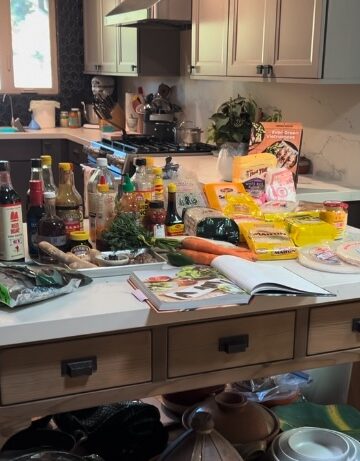



burkie says
thanks for the list, andrea! i'll definitely keep an eye for some of those. however, i have to confess that a book called "Asian Dumplings" topped my wish list to santa this year 🙂
Andrea Nguyen says
Burkie -- You made my day! :-))
coach outlet says
[ this is good]
Cheap Coach Bags says
Convincing professional men to spend their free hours reading a magazine is not easy – particularly in the age of the internet!
Canada Goose Danmark says
Active happiness---not mere satisfaction or contentment ---often comes suddenly, like an April shower or the unfolding of a bud.
Beats by dr dre says
Too much experience is a dangerous thing.
marlon says
i have to confess that a book called "Asian Dumplings" topped my wish list to santa this year 🙂